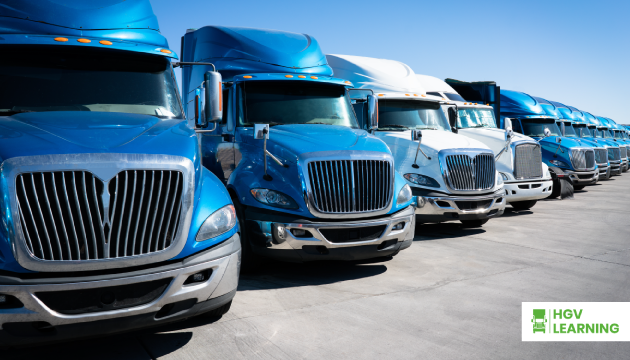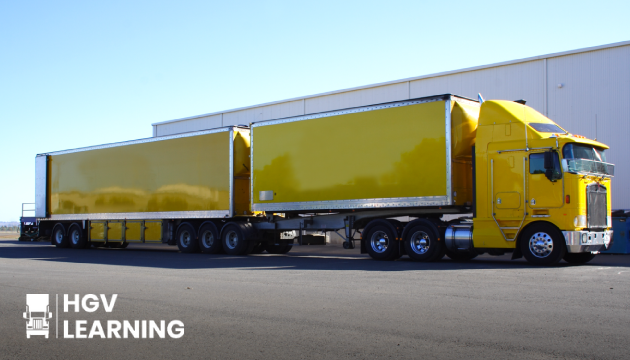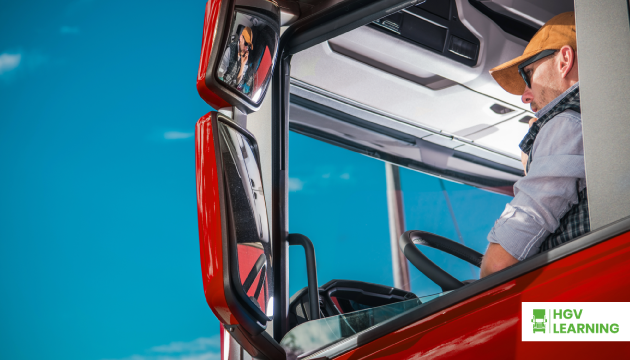Related Articles

18/07/2025
Finance HGV Training: Payment Options, Grants and Tips

15/07/2025

Driving licences are an essential part of our lives, allowing us to legally operate various types of vehicles on public roads. You may have come across different categories mentioned on driving licences, such as C1, and wondered what they mean. In this article, we will explore the C1 category on a driving licence, its significance, and how it can open up new opportunities for drivers.
So, let’s dive in!
The C1 category on a driving licence refers to a specific classification that grants you the privilege to drive vehicles weighing between 3,500kg and 7,500kg. It is an intermediate-level category between the standard B category (car) and larger commercial vehicle categories. The inclusion of the C1 category expands the scope of vehicles you can legally drive.
To obtain a C1 licence, you must meet certain eligibility criteria. Generally, you must be at least 18 years old and hold a valid full car (category B) driving licence. Additionally, you need to pass a medical examination to ensure you meet the necessary health requirements.
It’s important to be aware of the restrictions and limitations that come with a C1 licence. While it allows you to operate vehicles within the specified weight range, there might be additional restrictions depending on the country or jurisdiction you are in. It’s crucial to familiarise yourself with any specific regulations that apply to C1 licence holders in your area.
Having a C1 category on your driving licence significantly expands the range of vehicles you can drive. With this licence, you can operate vehicles such as small lorries, ambulances, horseboxes, and motorhomes. This opens up exciting possibilities for various personal and professional purposes.
For individuals looking to pursue a career in the transportation or logistics industry, having a C1 licence can be a valuable asset. Many jobs require the ability to operate vehicles within the C1 category. Opportunities in delivery services, emergency medical services, and event management often require C1 licence holders.
If you enjoy outdoor activities or have hobbies that involve larger recreational vehicles, a C1 licence can enhance your experiences. Whether you’re planning a camping trip with a motorhome or transporting your horses in a horsebox, having a C1 licence gives you the freedom to explore your interests.
In emergency situations, having a C1 licence can make a significant difference. If you find yourself in a situation where you need to drive an ambulance or rescue vehicle, a C1 licence allows you to provide critical assistance during times of need. Being prepared to handle such scenarios can be immensely rewarding.
To begin the process of obtaining a C1 licence, you must meet the minimum age requirement. In most countries, you need to be at least 18 years old. However, age requirements can vary, so it’s crucial to verify the specific regulations in your area.
Once you meet the age requirement, you can apply for a provisional C1 licence. This involves filling out the necessary forms and providing the required documentation, such as proof of identity, residency, and any applicable medical certificates.
To prepare for the C1 driving test, you must undergo both theoretical and practical training. The theoretical training covers essential knowledge about driving larger vehicles, road safety, and specific regulations. Practical training involves hands-on experience, honing your skills in handling larger vehicles and performing manoeuvres unique to the C1 category.
The C1 driving test evaluates your competence in operating vehicles within the C1 category. It typically consists of a theory test, a hazard perception test, and a practical test. The theory test assesses your understanding of the rules and regulations specific to C1 vehicles, while the hazard perception test gauges your ability to identify potential risks on the road. The practical test involves demonstrating your driving skills, including manoeuvring, reversing, and on-road driving.
Upon successfully passing the C1 driving test, your provisional licence can be upgraded to a full C1 licence. This allows you to enjoy the benefits and opportunities that come with the C1 category.
The theory test for the C1 driving category focuses on specific knowledge related to larger vehicles. It covers topics such as vehicle dimensions, weight limits, loading regulations, and safety procedures. Thorough preparation is essential to ensure you have a solid understanding of these concepts.
The hazard perception test measures your ability to identify and react to potential hazards on the road. It presents a series of video clips, and you must quickly identify and respond to developing hazards. Practicing hazard perception skills is crucial to perform well in this test.
The practical test evaluates your driving skills in various scenarios specific to C1 vehicles. It assesses your ability to handle larger vehicles safely, including manoeuvring, reversing, and driving on different types of roads. The test also evaluates your understanding of vehicle safety checks and loading procedures.
During the practical test, you will be assessed on your knowledge of vehicle safety checks. This includes checking essential components such as tires, brakes, lights, and fluid levels. Familiarity with these checks and the ability to demonstrate them accurately is crucial.
Your on-road driving skills will be evaluated during the practical test. This includes demonstrating proper lane positioning, appropriate speed control, effective observation, and adherence to traffic rules and signs.
The practical test assesses your ability to perform reversing and manoeuvring with precision and control. This includes parallel parking, reversing around corners, and manoeuvring in tight spaces. Practice and confidence in these manoeuvres are vital for success.
For certain C1 vehicles, such as lorries or motorhomes, the practical test may evaluate your ability to load and unload cargo safely. This involves demonstrating knowledge of securing loads, weight distribution, and proper handling of equipment or goods.
Selecting a reputable and experienced training provider is crucial for effective preparation. Look for training programs that cover all aspects of the C1 driving test, including theory, hazard perception, and practical skills. Reading reviews and seeking recommendations can help you make an informed choice.
To succeed in the theory test, familiarise yourself with the specific knowledge required for the C1 category. Study the official driving manuals and take advantage of online resources, practice tests, and mock exams to reinforce your understanding and identify areas that need improvement.
Practical training plays a vital role in preparing for the C1 driving test. Enrol in professional driving lessons that focus on C1 category vehicles. Practice under the guidance of experienced instructors and consider taking mock tests to simulate the real exam environment and build confidence.
Building confidence is key to performing well in the C1 driving test. Regular practice, gaining experience behind the wheel of C1 vehicles, and seeking feedback from instructors can help boost your confidence and improve your driving skills.
When applying for a provisional C1 licence, there is usually an associated fee. Check with the licensing authority in your country for the exact cost.
The cost of training and preparation for the C1 driving test can vary depending on the training provider and the duration of the course. Research different options and consider the quality of training offered before making a decision.
To take the C1 driving test, there are fees involved. These fees cover the administration and evaluation of the tests. Be sure to check the current fees set by the licensing authority in your area.
Once you pass the C1 driving test and upgrade your licence to a full C1 licence, there may be additional costs involved, such as updating your driving licence and obtaining a new physical licence card.
The validity period and renewal process for a C1 licence can vary depending on the country or jurisdiction. It’s important to stay informed about the renewal requirements and ensure your licence remains valid.
In some cases, you may decide to convert your C1 licence to a different category, such as Cat C or C+E. Understanding the conversion process, requirements, and any additional training or tests necessary is essential if you plan to expand your driving capabilities.
The time required to obtain a C1 licence can vary based on factors such as training availability, personal preparation, and the scheduling of tests. On average, it can take several weeks to a few months.
Driving regulations vary from country to country. It’s important to check the specific rules and requirements for driving C1 vehicles in the countries you plan to visit. Some countries may accept your C1 licence, while others may have additional conditions or restrictions.
Yes, with a C1 licence, you can drive C1 category vehicles with passengers. However, it’s essential to adhere to passenger capacity limits and ensure the safety of your passengers by driving responsibly.
Yes, a medical examination is typically required when applying for a C1 licence. This examination ensures that you meet the necessary health requirements to operate vehicles within the C1 category safely.

18/07/2025

15/07/2025
Complete the form below and we’ll contact you asap.

